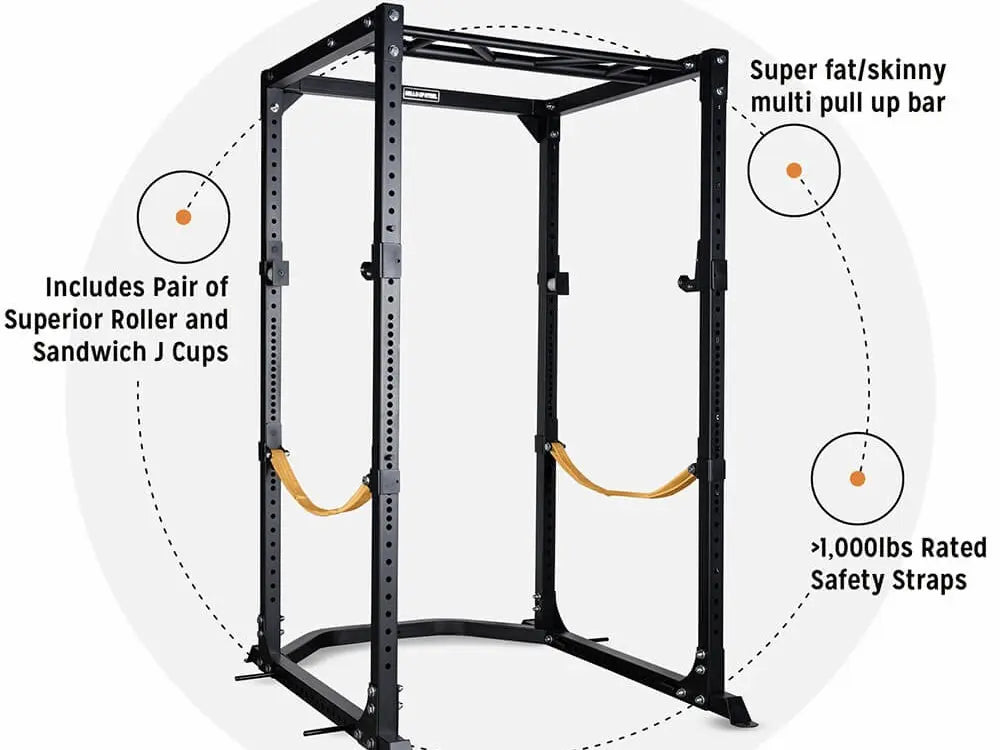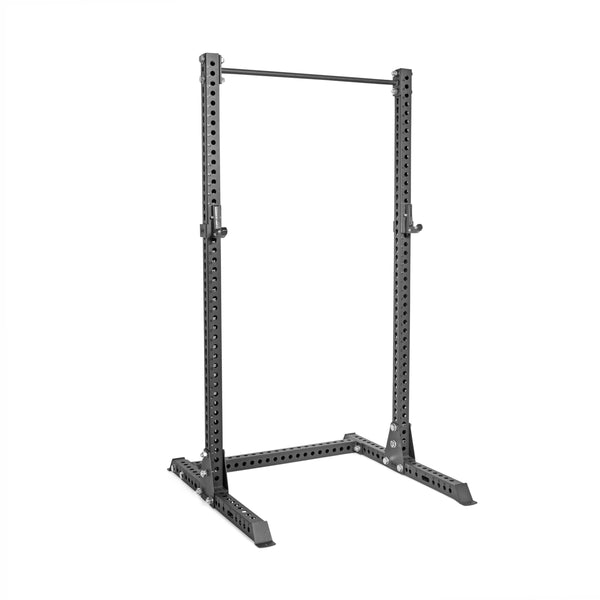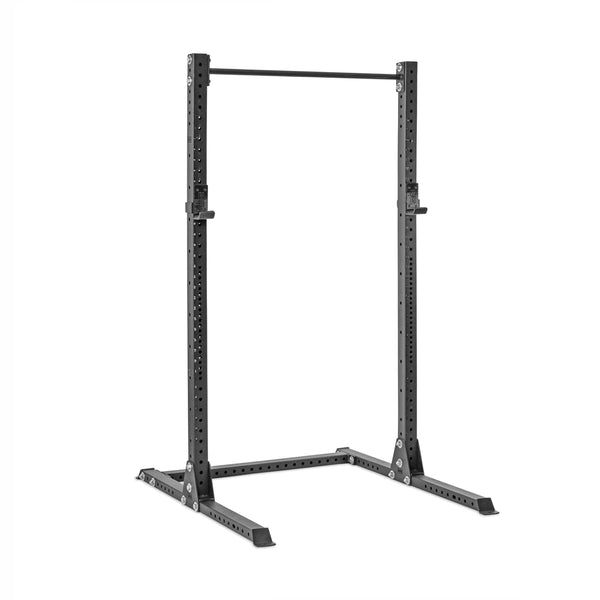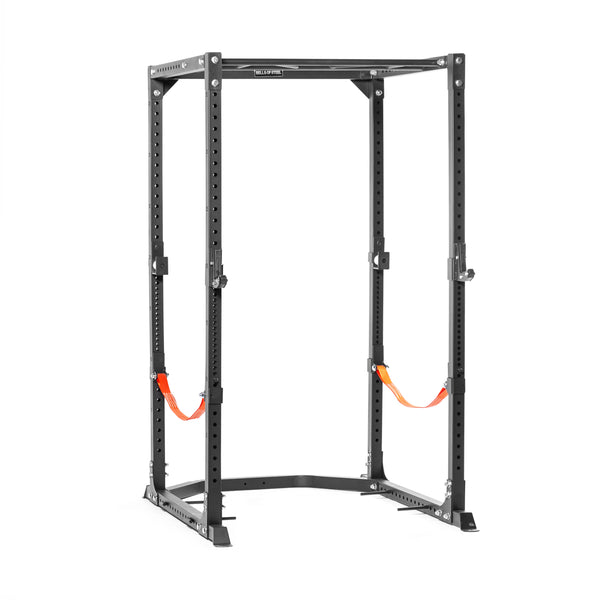A squat rack is a steel frame with two uprights, where you squat and bench press outside of the frame. It also tends to include some plate pegs at the back of the unit, and occasionally includes a pull-up bar. A squat rack is over half the size of a full power rack, but is often referred to as a “half-rack” since it typically has only two usable uprights.
This smaller design makes it a better option if you’re tight on space. Because of its smaller size, its frame has less steel and in turn, makes it more affordable — which is great if you’re on a limited budget. The smaller size has another advantage, which is that it can be moved more easily than a full power rack. Although you’ll need to remove any plates you’ve stored on the back before moving it, two people should be able to walk it across the room without much trouble.
Finally, it allows more freedom for overhead exercises since you perform your lifts on the outside of the frame, instead of inside it. Whether it’s a barbell overhead press, push press or another overhead variation, you no longer have upper side beams to prevent you from locking out the barbell.
The major drawback of a squat rack is that it can’t catch a bar from a failed lift. Even though some units are technically compatible with spotter arms, using them is NOT recommended — see this video for an example. The squat rack could tip over if a heavy barbell is rested on the spotter arms, even if it’s heavily weighed down with weight plates at the back.
A squat rack also cannot allow deadlift variations, since safety pins/straps aren’t compatible with it and because using spotter arms isn’t worth the risk. A power rack is a steel frame with four uprights, where you perform your lifts inside the frame. Power racks sometimes have two extra posts to allow for plate storage and almost always include a pull-up bar of some sort, either straight or with multiple grips.
From looks alone, you can immediately tell that a power rack is built with more steel and has a bigger footprint than a squat rack. This means that a power rack is heavier and more sturdy, even more so if weight plates are stored on the back — our full-sized Brute Rack is a great example of this.
Further, a power rack is also more safe. Pin pipe safeties or safety straps are almost always included, which allows you to fail a rep safely without needing a spotter. Lastly, a power rack can do (almost) every exercise that a squat stand can do. But, it can also allow chin-ups and pull-ups, and permits for many deadlift variations like rack pulls and deadlifts with bands — things that a squat rack can’t do without being at risk of tipping.
For an outside opinion, check out this Light Commercial Power Rack review. That said, a power rack also has some clear drawbacks. Being heavier and sturdier makes it a pain to move to another location in your gym, often requiring 3-4 people. And because of its size, a power rack also tends to take up significantly more space.
Finally, all that extra steel doesn’t come for free. Expect to pay noticeably more for a power rack (even a budget option) than you would for a squat rack. Technically, yes. But exactly how safe you are depends on a couple of factors. Bailing a squat refers to flinging the bar off your back if you fail a rep and can’t stand up from the bottom. And just like tying your shoes, it’s a skill you have to learn.
If you’ve bailed dozens of heavy reps, chances are high that you’ll be able to safely squat without a rack — like when you’re using a squat rack or squat stands. The other thing to keep in mind is your equipment and flooring. In an ideal world where you’re expecting to bail a squat in the near future, you’d be working out on a lifting platform with bumper plates. This way, the bumper plates and rubber mats will absorb some of the impact as the barbell is tossed off your back.
However, prepare to have your equipment damaged if you’re not careful. Using iron weight plates and bailing a heavy squat directly onto a concrete surface is a surefire way to damage your barbell, weight plates and/or lifting surface. If you’re in a pinch though, you could always add a couple of deadlift pads under your lifting area without having to invest in an entire lifting platform. This way, the barbell will be tossed off your shoulders and will land on the pads — causing less noise and avoiding possible damage to your flooring and equipment.
At first glance, a squat rack and a power rack might appear to be the same but their subtle differences can be a deal breaker for you and your home gym. If you’re tight on space (or money), are comfortable bailing your squats and prefer lifting with more overhead freedom, then a squat rack might be the better choice for you.
On the other hand, a power rack might be the ideal option if you value stability and safety — and if you like doing chin-ups and deadlifts inside your rack.




